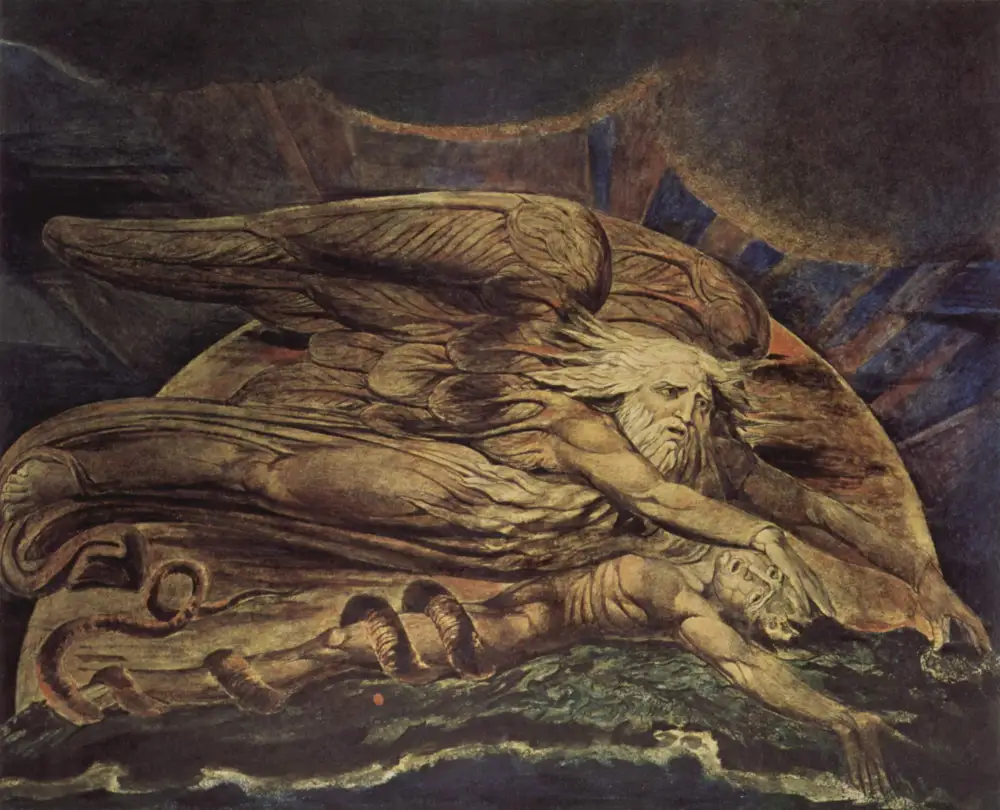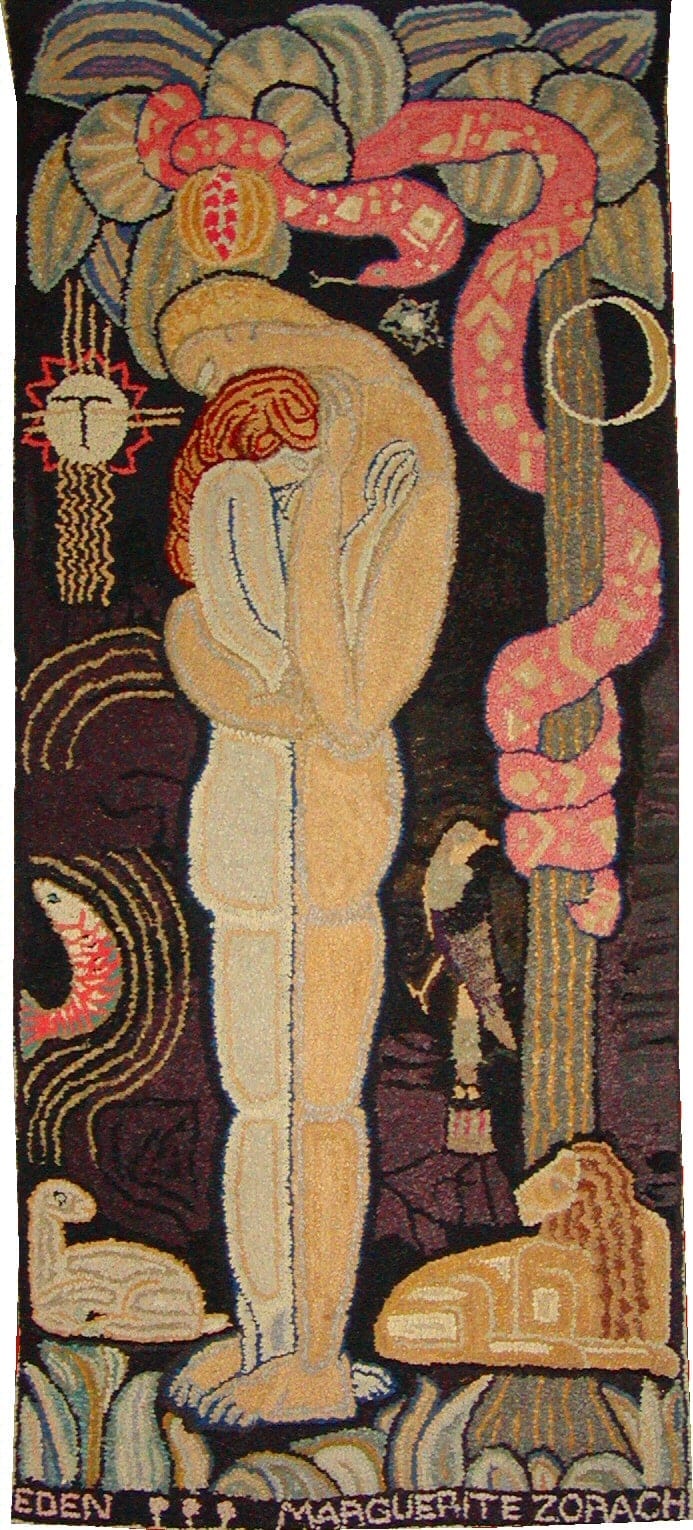IN THE DAYS OF PRISMATIC COLOR
By:
July 2, 2023
A (pro- or anti-) science-, mathematics-, technology-, space-, apocalypse-, dehumanization-, disenchantment-, and/or future-oriented poem published during sf’s emergent Radium Age (c. 1900–1935). Research and selection by Joshua Glenn.

not in the days of Adam and Eve but when
Adam
was alone; when there was no smoke and
color was
fine, not with the fineness of
early civilization art but by virtue
of its originality; with nothing to modify it
but the
mist that went up, obliqueness was a varia-
tion of the perpendicular, plain to see and
to account for: it is no
longer that; nor did the blue red yellow
band
of incandescence that was color keep its
stripe: it also is one of
those things into which much that is
peculiar can be
read; complexity is not a crime but carry
it to the point of murki-
ness and nothing is plain. complexity
moreover, that has been committed to
darkness, instead of granting it-
self to be the pestilence that it is, moves all
a-
bout as if to bewilder us with the dismal
fallacy that insistence
is the measure of achievement and that all
truth must be dark. Principally throat,
sophistication is as it al-
ways has been — at the antipodes from the
init-
ial great truths. “Part of it was crawling,
part of it
was about to crawl, the rest
was torpid in its lair.” In the short legged,
fit-
ful advance, the gurgling and all the
minutiaæ — we have the classic
multitude of feet. To what purpose! Truth is
no Apollo
Belvedere, no formal thing. The wave may
go over it if it likes.
Know that it will be there when it says:
“I shall be there when the wave has gone
by.”
— A 1919 poem (in The Lantern) by a poet who claimed that “language is a special extension of the power of seeing.” The book Marianne Moore and the Visual Arts: Prismatic Color claims that this poem responds to the art works of Moore’s friends, the American cubists (though their use of brilliant colors was more fauvist) William and Marguerite Thompson Zorach, who shared a predilection for Edenic scenes and figures. “In the Days of Prismatic Color” expresses succinctly “the mystical and primitivist beliefs Moore shared with them and other artists in their circle,” this book suggests.

The eternal radiance here is not a single white light but rather its components, the prismatic colors. According to Annie Besant, this is a vision witnessed by mystics of various faiths: “These vibrations… give rise to the most exquisite and constantly changing colours, waves of varying shades like the rainbow hues in mother-of-pearl, etherealised and brightened to an indescribable extent, sweeping over and through every form, so that each presents harmony of rippling, living, luminous, delicate, colours, including many not ever known to earth….”
The vision Adam sees (and Moore envies) is neither a god nor a single white ray of truth, but rather prismatic color”: “the blue-red-yellow band / of incandescence.”
Moore makes it clear that whereas the mist is necessary to reveal Eden’s prismatic color, smoke (associated with post-lapsarian society and civilization) blurs that vision. The subject of the first sentence emphasizes this distinction: “obliqueness” is both mistlike and smokelike, for in its original sense it describes the light rays refracted by the prism, but in its present sense it means not “plain to see.” Moore seems to justify the complexity of her own poems by distinguishing between, on one hand, an undesirable “obliqueness” that obscures the truth and, on the other hand, an “obliqueness” that is difficult because its truth threatens familiar, easy misconceptions.
Here’s an ingenious analysis of where the opening imagery may come from.
RADIUM AGE PROTO-SF POETRY: Stephen Spender’s THE PYLONS | George Sterling’s THE TESTIMONY OF THE SUNS | Archibald MacLeish’s EINSTEIN | Thomas Thornely’s THE ATOM | C.S. Lewis’s DYMER | Stephen Vincent Benét’s METROPOLITAN NIGHTMARE | Robert Frost’s FIRE AND ICE | Aldous Huxley’s FIFTH PHILOSOPHER’S SONG | Sara Teasdale’s “THERE WILL COME SOFT RAINS” | Edith Södergran’s ON FOOT I HAD TO… | Robert Graves’s WELSH INCIDENT | Nancy Cunard’s ZEPPELINS | D.H. Lawrence’s WELLSIAN FUTURES | & many more.
